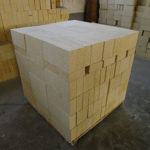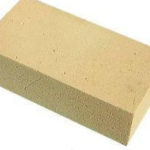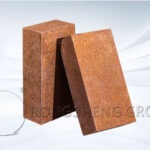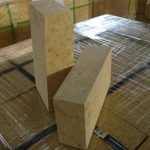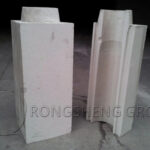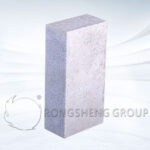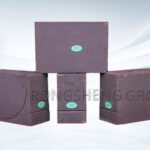The scientific name of AZS refractory brick is fused zirconium corundum brick. It is made by pouring the raw material into the mold after completely melting, cooling, and solidifying. Mainly serve the use of glass furnaces. The shrinkage cavity caused by the volume shrinkage of this product during the condensation process is a matter that should be paid attention to when using it. The casting methods of AZS refractory bricks (fused zirconium corundum bricks) are ordinary casting, inclined casting, no-shrinkage casting, and quasi-no-shrinkage casting. Different casting methods of AZS products can meet the use requirements of various parts of ceramic frit kilns, soda kilns, and glass kilns. It is erosion resistant, corrosion resistant, and has a long service life. At present, it is generally cast and formed by the electrofusion oxidation method.
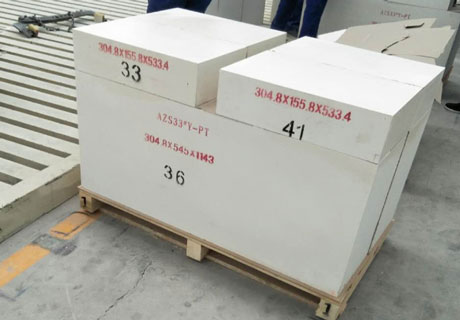
Changes in the use of fused cast zirconium corundum bricks in glass kilns
The main components of fused cast zirconium corundum bricks are alumina, zirconia, and silica, the English abbreviation is AZS, which means the English initials of the main components. During production, alumina, zirconia, and silica are put into an electric melting furnace, melted, and cooled by injection molding. The petrographic structure consists of the eutectoid of corundum and zirconia and the glass phase, and the glass phase is filled between the two crystals. Fused and cast zirconium corundum bricks are mostly used in the construction of glass kilns. Different models have different compositions and can be used for the construction of different parts of glass kilns. Glass kilns in use will withstand thousands of degrees of high temperature. Under the severe test, what changes will the fused cast zirconium corundum bricks have?
The fused cast zirconium corundum material will undergo a crystallization process in the glass furnace. First, the baddeleyite zircon is precipitated in the crystallographic space of the baddeleyite zircon, and then the aluminum-zirconium eutectic is precipitated on the baddeleyite zircon and corundum eutectoid line, and finally, the glass phase and the remaining crystals are precipitated. As one of the petrographic structures of fused cast zirconium corundum bricks, the glass phase can reduce the melting temperature, expand the casting temperature range, and relax thermal stress. But it is also the weak link of fused cast zirconium corundum brick, which reduces the corrosion resistance of the material.
The fused cast zirconium corundum brick will be gradually eroded in the glass furnace, and the glass phase will be replaced by the pool glass first. The corundum begins to dissolve, slowing the erosion of the brick body. After the corundum is exhausted, the cast refractory material begins to disintegrate, and the baddeleyite zircon enters the kiln and turns into a coagulum. If the refractory components are dissolved and not mixed, streaks will form. The composition of the stripes is different from that of glass, which can affect the degree of dissolution of the gas and cause the precipitation of bubbles. Will adversely affect the quality of the produced glass. Coagulum and streaks will also affect the quality of the glass.
To buy AZS refractory bricks for glass furnaces, and fused cast zirconium corundum bricks, please contact us.

